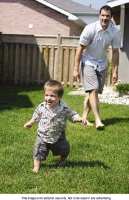Lead exposure puts adults, children at risk

Posted by peter88
from the Health category at
19 Jul 2011 10:03:53 pm.

Where is lead found?
Lead can be found in many places, including your home. Homeowners who own a home built before 1978 likely have or had lead-based paint somewhere in their home. Beginning in 1978, the United States federal government banned lead-based paint from housing. However, homes built prior to that faced no such restrictions.
Another place lead can be found is in the soil around the home. The soil gets lead from a host of sources, including exterior lead-based paint and leaded gas used in cars. What's especially troubling about the presence of lead in soil is the risk it poses to kids, who can inhale the lead even if they're just playing in the yard.
Household dust is another source of lead. Dust contains the lead from deteriorating exterior paint or soil brought into the home from the outside.
Perhaps the scariest source of lead is drinking water. Homes might have plumbing with lead or lead solder, putting residents at risk of lead poisoning. Lead cannot be seen or tasted and it's also aroma-free, so concerned homeowners should contact their local health department and request their water be tested. Until then, use only cold water for drinking and cooking, and run the water for 15 to 30 seconds before drinking it.
Men and women who work with lead can bring it home on their hands and clothes. In such instances, it's best to shower before coming from work and separate work clothes from the rest of your clothes and the family's clothes when doing laundry.
Additional sources of lead are old painted toys and furniture; food and liquids stored in lead crystal or lead-glazed pottery or porcelain; and hobbies, such as making pottery or stained glass, that used lead.
How do I know I'm at risk?
A home with lead-based paint does not necessarily mean the home is a hazard. To determine if you and your family are at risk, testing on both the family and the home is necessary.
The levels of lead in a child's blood typically increase rapidly from six to 12 months of age and often peak somewhere between 18 and 24 months. Blood tests can detect high levels of lead and are most important for children between ages 1 and 2 and children and family members who have been exposed to high levels of lead.
A home inspection can be done in one of two ways, be it a paint inspection or a risk assessment. A paint inspection won't determine if the paint is hazardous, but it will determine the lead content of each different type of painted surface throughout the home. A risk assessment determines if there are any sources of lead exposure and will also suggest a course of action to address these hazards. Homeowners should not do a home inspection on their own. Hire a qualified professional to do the job. The National Lead Information Center (1-800-424-LEAD) can help homeowners find a trained and qualified professional in their area.
How can you protect your family from lead exposure?
Individuals can take several steps to protect their families from lead exposure. In addition to home inspection and blood testing, the following are some of the ways to protect men, women and children from lead exposure.
* Clean up paint chips immediately.
* Clean floors, window frames and window sills on a weekly basis, preferably with a mop, sponge or paper towel soaked in warm water. If possible, use an all-purpose cleaner or a cleaning product made specifically for lead.
* Be thorough when rinsing mops and sponges after cleaning dirty or dusty areas.
* Make sure kids wash their hands frequently and especially before they eat and go to sleep.
* Make sure kids' play areas are clean, and be sure to wash toys and even stuffed animals regularly.
* Avoid tracking soil into the home by removing shoes before entering.
More information about lead exposure is available at www.epa.gov.
0 Comments



